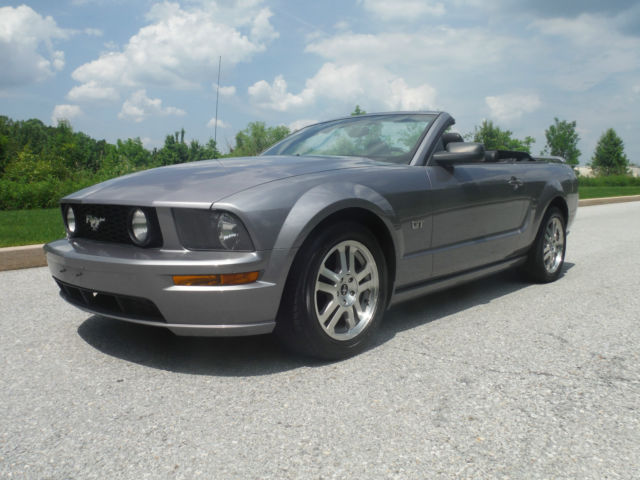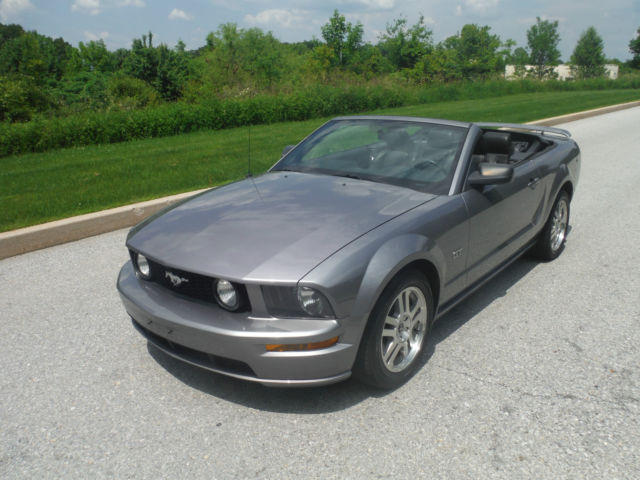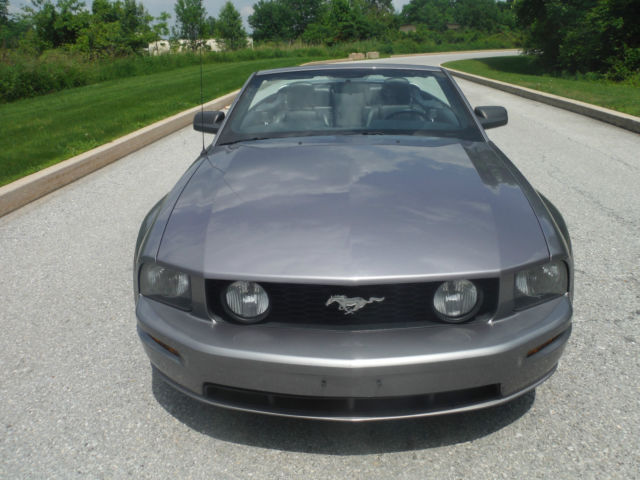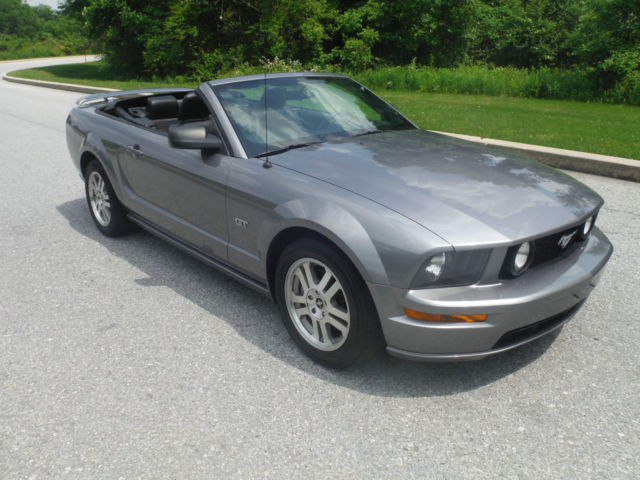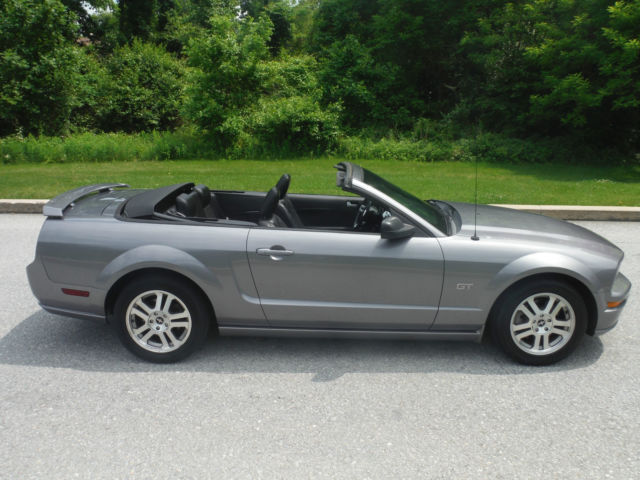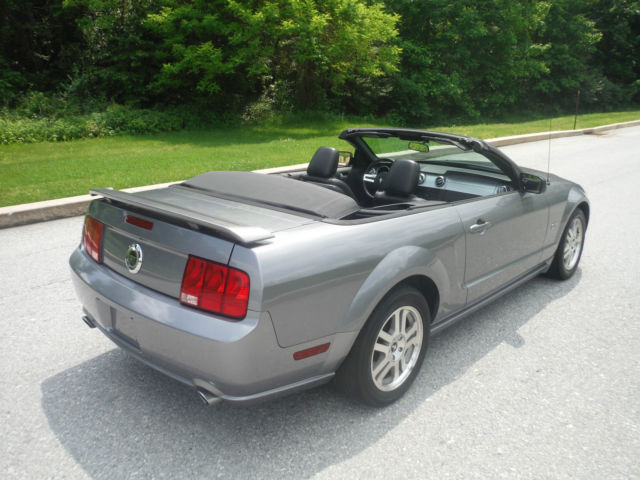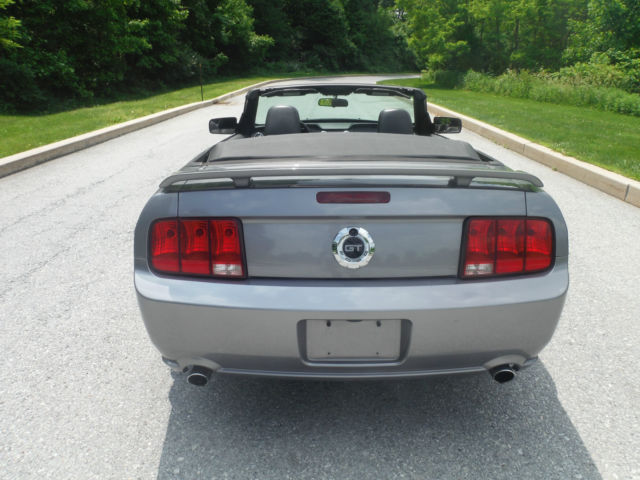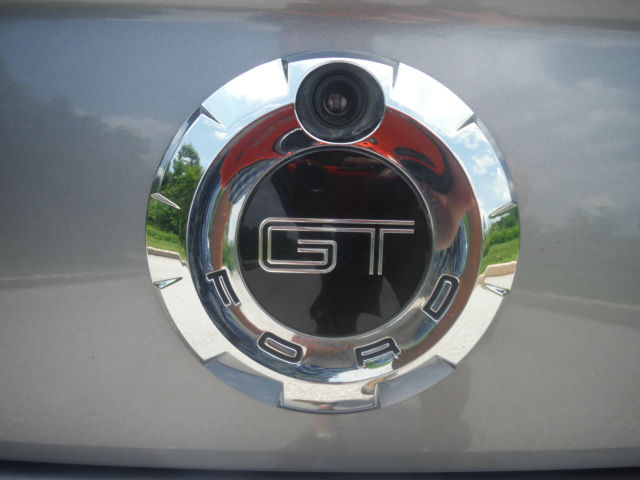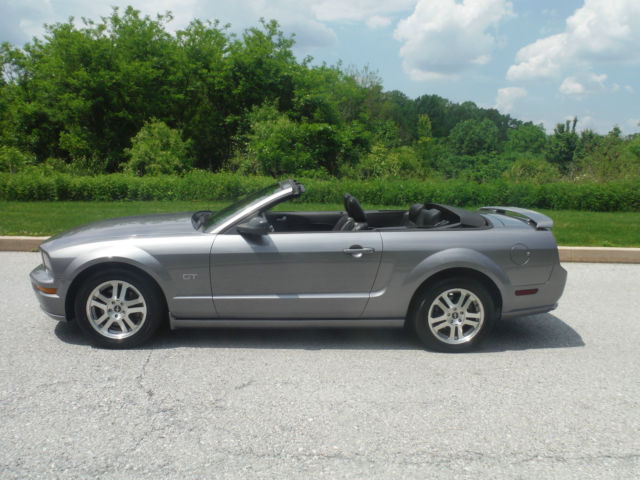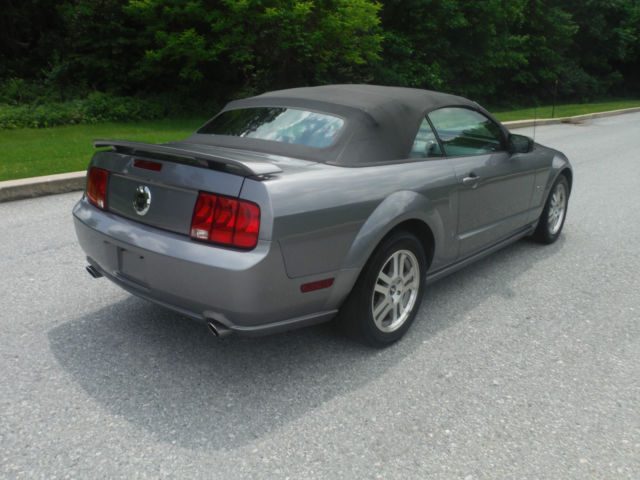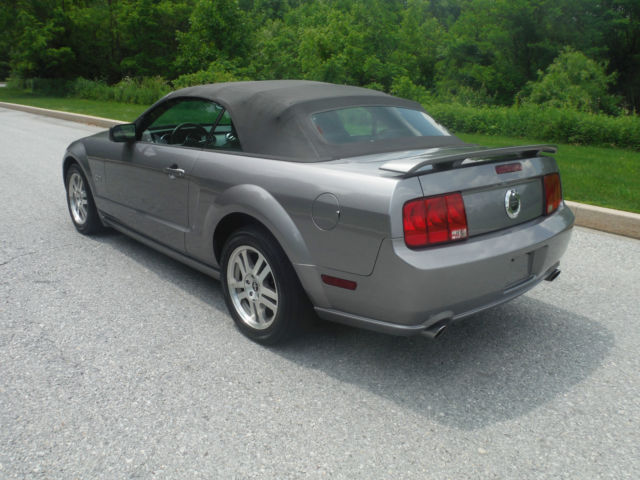2005 Ford Mustang GT Convertible Leather Gray on Black Clean Lowest Price
- Condition: Used
- Make: Ford
- Model: Mustang
- SubModel: GT PREMIUM AUTOMATIC CONVERTIBLE
- Type: Convertible
- Trim: GT AUTOMATIC CONVERTIBLE
- Year: 2005
- Mileage: 110,200
- VIN: 1ZVHT85H165264117
- Color: Gray
- Engine size: V8
- Number of cylinders: 8
- Power options: Air Conditioning, Cruise Control, Power Locks, Power Windows, Power Seats
- Fuel: Gasoline
- Transmission: Automatic
- Drive type: RWD
- Interior color: BLACK
- Safety options: Anti-Lock Brakes, Driver Airbag, Passenger Airbag, Side Airbags
- Options: Convertible, Leather Seats
- Vehicle Title: Clear
- Interested?
2005 Ford Mustang GT PREMIUM AUTOMATIC CONVERTIBLE Description
Thank you for taking a moment to visit our latest drop top modern muscle car offering. This 2005 Ford Mustang is a wonderful example of one of the Iconic summertime treats Detroit has ever produced. This Mustang is a GT Premium, which gives you leather seats, automatic transmission and more. This car has 110k highway miles on it, but it looks and drives nicer than many with half the miles. This particular example is finished in Gray metallic with a charcoal leather interior and charcoal convertible top. We welcome pre-bid inspections and are pleased to work with your choice of financing institutions. This car has many many miles left to go and simply needs a new pilot!The 2005 Mustang is completely redesigned and on its first new platform in 20 years. Introduced in October 1964, the Mustang certainly has a rich history, starting with its name, which Ford Executive Stylist John Najjar took from the P-51 Mustang fighter plane that saved the Allies from German Messerschmitts and Focke Wulfs in World War II. (Good thing we won, or I'd be reviewing the Focke GT.) Ironically, the P-51 was known as the Cadillac of the Sky.
That's just enough history to make my point. I'm too practical a reviewer to let nostalgia get in the way of a car evaluation. In my opinion, some of the Mustang generations have stunk in one or more important ways. It is with this established that I say the 2005 Mustang GT — as an American icon, as the last of the affordable muscle cars and as a modern car irrespective of those historical considerations — is a triumph. I drove the V-8-powered GT with an automatic transmission.
Exterior & Styling
There's no better proof of my point than the Mustang's styling. Young people who know nothing of the second-generation, late-1960s Mustang styling on which the new model is based are just as likely to swoon as the people who drove, saw or lusted after Mustangs in 1964. We know styling is important, but sometimes it's difficult to judge how much so. The Mustang gives a pretty good idea, because I've met innumerable Americans who don't consider themselves "Mustang people," or ever saw themselves driving a muscle car, who are considering buying the new one just for its looks.
Ride & Handling
To understand the improvement, it helps to know that the Mustang's previous platform, called Fox, was 25 years old and borrowed from the not-very-cool Ford Fairmont. Ford's ability to squeeze the most out of this architecture for so long is remarkable, but even at its most modern, the Fox-based Mustang was something of a noodle. It shuddered and jiggled, which is one of the many sources of the 2004 model's wildness and unpredictability. To be clear, the 2004 was still a rip-snorting good time. But there's raw and then there's too raw, and the old pony was too raw for the 21st century.
The new platform is an upgrade of the one that underpins the Lincoln LS. Torsional rigidity is up 35 percent over the 2004, and the structure is also 39 percent stiffer in bending. The greater rigidity improves handling and gives the car a more solid and confident feel. To spare you non-gearheads, I'm going to stick to the driving experience and features.
Overall, the Mustang's ride and handling are exponentially improved. With its wheelbase 6 inches longer and the front wheels farther forward, the weight distribution is 53/47 (front/rear) versus 57/43 in the 2004, resulting in just enough understeer to be safe but not so much that it's dull. The car's turning diameter is down 3 feet to 34.1 feet.
As always a rear-wheel-drive car, the Mustang features a solid, non-independent rear axle. Some have already complained that the rear end hops when cornering on bumpy pavement, and that Ford should have gone with independent. I simply disagree. Ford retained this design to maximize straight-line acceleration. I, too, experienced a little hop in rare circumstances, but the overall handling is both so much better than the previous model's and so composed given the GT's raw power, I don't think I'd change a thing. The Mustang isn't supposed to compete with the Porsche 911. You can make a car handle too well. Staying perfectly glued to the road isn't fun, and it's definitely not Mustang.
The Mustang GT is what it's all about. The manual's shifter is characteristically meaty, with shorter throws than in previous years. Diehards will find the clutch pedal too soft, but it's not so forgiving that newbies won't kill the engine repeatedly. The gear ratios are well chosen, and there's simply no experience like the fury of a large-displacement V-8 pressing you into your seat. And the sound! Maybe it's because I grew up with big-blocks, but the sound of a high-revving four-banger at full boil has always made my teeth hurt. (And I don't see how it's improved any by those sewer-sized aftermarket tailpipes that give the car a case of perpetual flatulence.) Nothing sounds like a Mustang, and when the dual exhausts start singing, the reaction is visceral.
The Inside
Let me put a very fine point on this: The previous-generation Mustang's interior was an ergonomics nightmare. I'm not talking about button location or something namby-pamby like that. I'm talking about a driver's seat that I've spent more time adjusting than any, in every other vehicle I've ever driven — combined — and without ever approaching actual comfort. I'm talking about a gearshift lever that was bent toward the driver because it would otherwise be too far to reach. The 2005 is much better in virtually every way.
The seat is the pinnacle of comfort. The modest side bolsters are comfortable, but aggressive driving calls for something more substantial.
Throughout are hints, if not direct lifts, from the classic Mustang era: the steering wheel, the automatic transmission's T-handle gear selector, the shape of the dashboard and the recessed gauges. More important than all of this is the fact that Ford made a commitment a few years back to improve its interior design and materials quality, and largely has delivered. The high point here is the use of real aluminum, and plenty of it, in the optional Interior Upgrade Package offered for every trim level. Recently introduced and redesigned vehicles have led me to believe that every automaker has a laboratory full of scientists attempting to make plastic look like aluminum — and failing. I've always believed they would be better off to send the scientists home and put the money toward the real thing. Ford has proven me right — though it comes in a package with other items you might not want.
One of these is the color-configurable instrument backlighting — the ergonomics problem I mentioned. It allows one to choose among 125 backlight shades, which come from red, green and blue LEDs, each of which can be set to five different intensities (5x5x5). If you've read any other critiques about this feature, you're expecting me to say it's too difficult to adjust. Not so. Well, yes, it's too difficult to adjust using the nearby buttons. But I think people will tire of this gimmick so quickly and leave it at one color that it won't matter. The greater ergonomics problem is that the gauges are recessed far more than the classic Mustangs', and they wash out easily in bright sunlight. It appears that the instruments can turn 125 colors but they can't turn bright enough to be seen deep in their shadowed wells. I haven't experienced the standard gauges, which might be better. (Send me an email if you have.)
Aside from the welcome exhaust rumble, the Mustang is certainly not a quiet car, but it is livable and none of the noise in my test vehicle came in the form of squeaks or rattles.
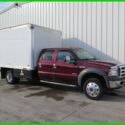 143560 Miles 2005 Ford F-550 Chassis 4WD Crew Cab Side Steps AUX Lowest Price
143560 Miles 2005 Ford F-550 Chassis 4WD Crew Cab Side Steps AUX Lowest Price
Mileage: 143,560
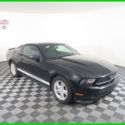 USED 70k Miles 2012 Ford Mustang Manual Cloth Seats AUX Lowest Price AUX
USED 70k Miles 2012 Ford Mustang Manual Cloth Seats AUX Lowest Price AUX
Mileage: 70,449
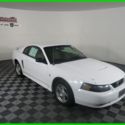 USED 188k Miles 2003 Ford Mustang Keyless Entry AUX Input Lowest Price in Southe
USED 188k Miles 2003 Ford Mustang Keyless Entry AUX Input Lowest Price in Southe
Mileage: 187,968
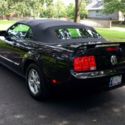 2005 BLACK Ford Mustang Convertible with Leather Interior!
2005 BLACK Ford Mustang Convertible with Leather Interior!
Mileage: 181,900
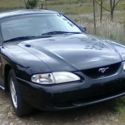 98 Ford Mustang, black w/leather gray seats, blown head gasket, clean title
98 Ford Mustang, black w/leather gray seats, blown head gasket, clean title
Mileage: 133,525
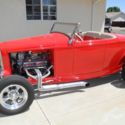 1932 Ford "LOWEST PRICE HIGHBOY ON EBAY "
1932 Ford "LOWEST PRICE HIGHBOY ON EBAY "
Mileage: 2,600
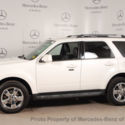 2012 Ford Escape - Call Today - Lowest Price Around!
2012 Ford Escape - Call Today - Lowest Price Around!
Mileage: 131,786
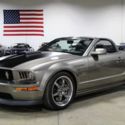 2005 Ford Mustang GT 18751 Miles Tungsten Gray Convertible 4.6 Liter Supercharge
2005 Ford Mustang GT 18751 Miles Tungsten Gray Convertible 4.6 Liter Supercharge
Mileage: 18,751
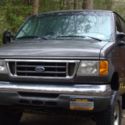 2007 FORD E-250 Super Duty QUIGLEY 4x4 Van - IN ACCIDENT - LOWEST PRICE!
2007 FORD E-250 Super Duty QUIGLEY 4x4 Van - IN ACCIDENT - LOWEST PRICE!
Mileage: 200,018
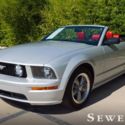 2005 Ford Mustang GT PREMIUM Convertible Red Leather
2005 Ford Mustang GT PREMIUM Convertible Red Leather
Mileage: 70,838
